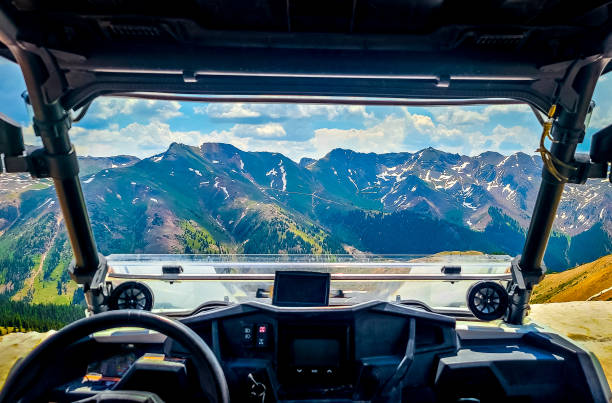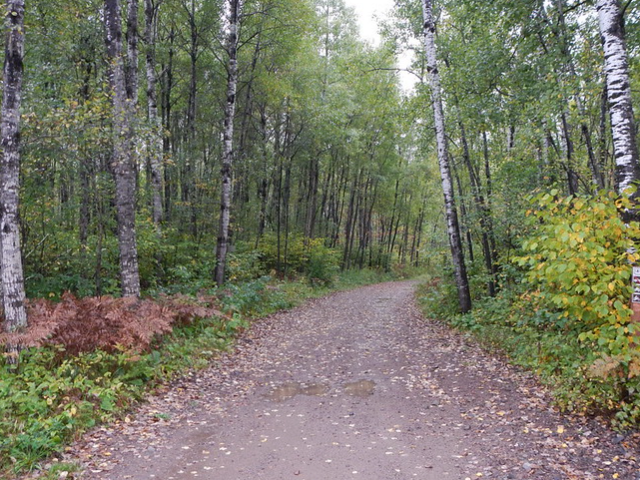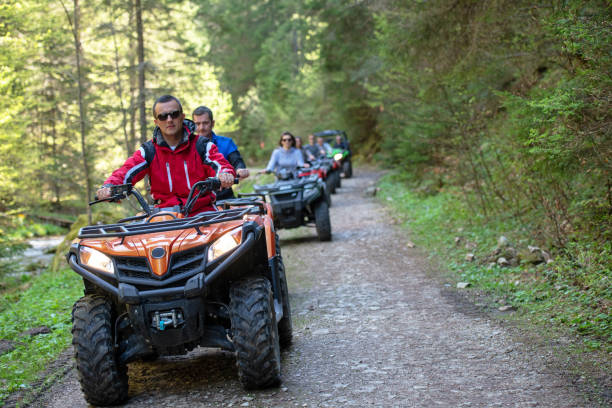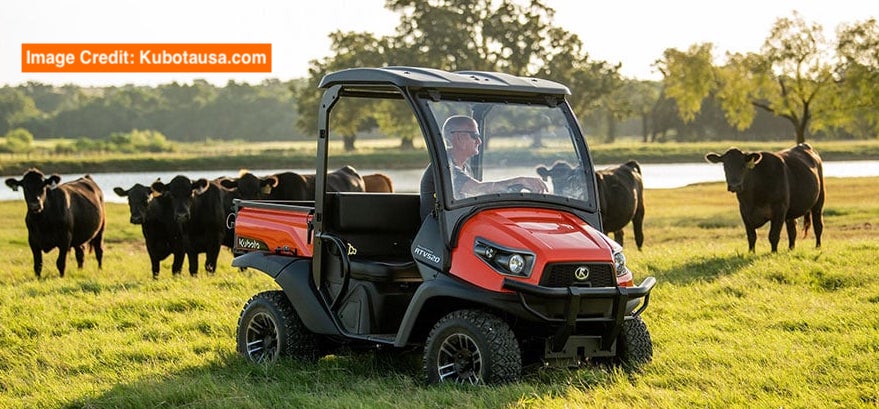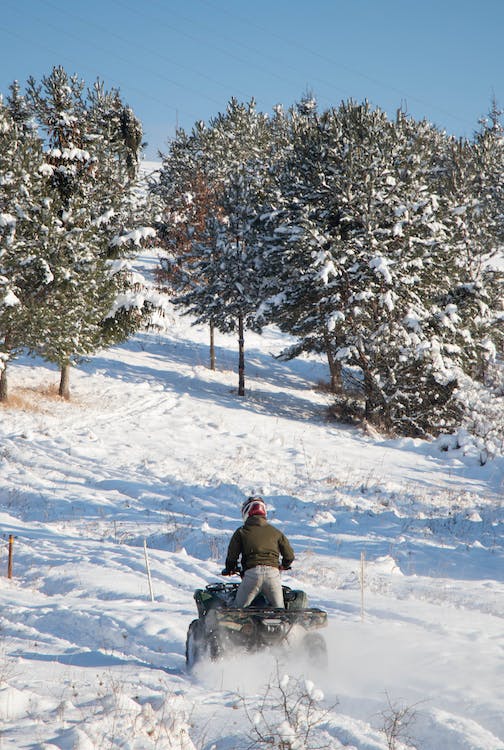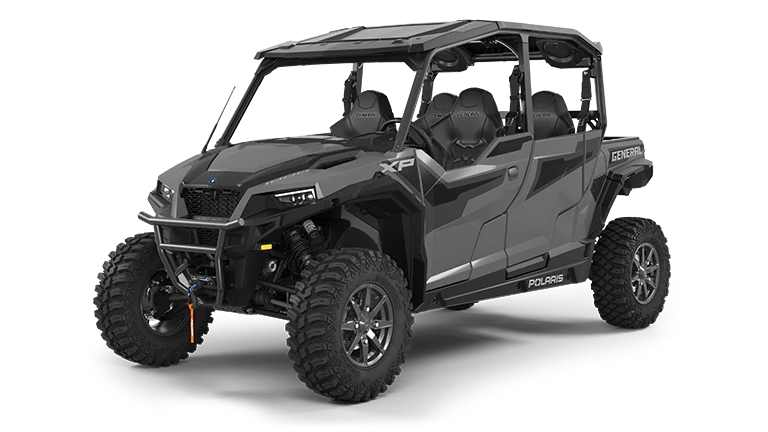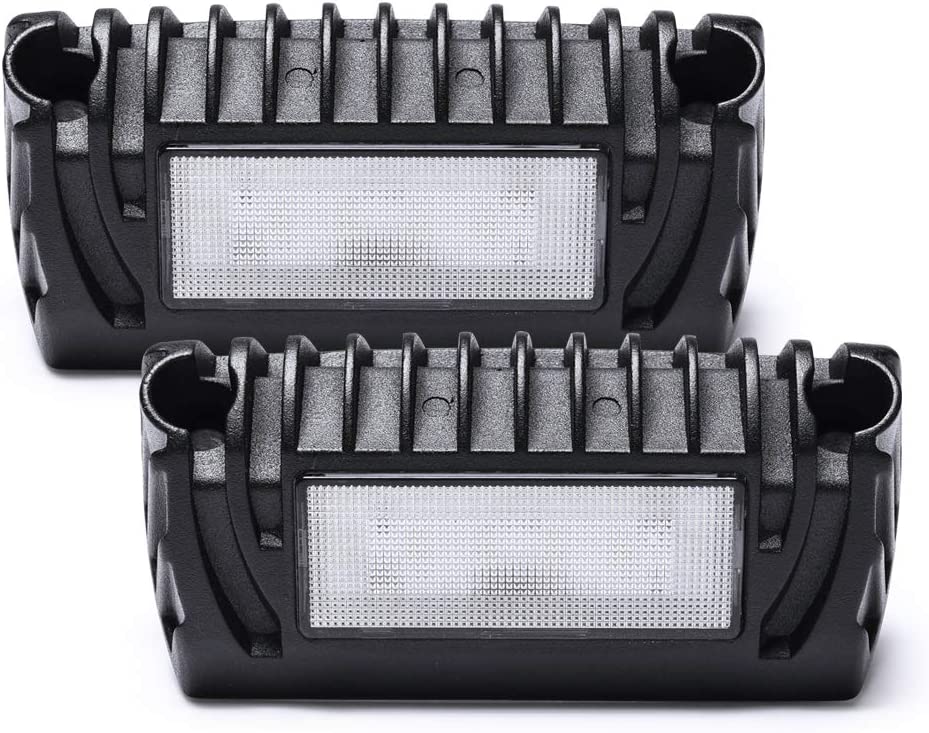As an Amazon Associate I may earn a commission from qualifying purchases at no additional cost to you.
What is a Side-by-Side ATV, SXS, RTV, or UTV?
A side-by-side ATV (All-Terrain Vehicle) technically means that one or more people can sit “side by side” while riding. In a side-by-side ATV, you have an upright seat with a backrest, brake and gas pedals, and a steering wheel.
People commonly use side-by-side ATVs, side-by-side, SXS, UTV (Utility Terrain Vehicles), and RTV (Rugged Terrain Vehicles) interchangeably.
Most of the time this is OK, however, there are a couple of exceptions.
Technically a UTV can be for a single passenger. Although not many UTVs hold only one person anymore, some still do. That said, side-by-sides are always designed to hold more than one passenger.
Also, RTV is a term that is specific to Kubota. Kubota refers to their utility-oriented product line of side-by-side’s as RTVs. Again, the Kubota RTV meets the definition of a side-by-side and even more so the definition of a UTV, but Kubota has branded their machines as RTVs.
You can also have a lot more accessories on a side-by-side ATV like mirrors, doors, windows, stereos, and much, much more (we will get into all that later). But for now, think of a side-by-side ATV as something more like an off-road car than a traditional ATV. Wait… what’s a traditional ATV?
What’s the difference between a side-by-side ATV and a traditional or regular ATV?
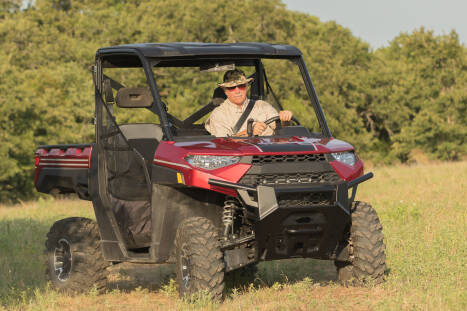
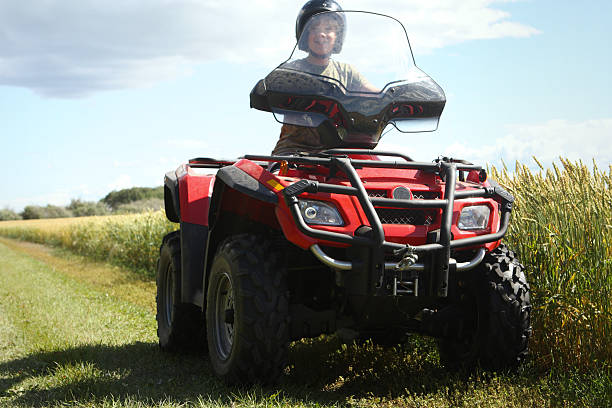
Well, technically any off-road or “all-terrain vehicle” can be considered an ATV. A Jeep or a 4-wheel drive truck, an off-road motorcycle (dirt bike), or even a golf cart, can be considered an ATV.
However, most people (and state regulations, check with your state to be sure) consider a Class I ATV to be a motorized machine, intended for use on unpaved terrain, that is less than 50 inches wide and has a dry weight of less than 1000 – 1200 pounds.
Most states and regulations (again, check with your particular state) consider a side-by-side to be a Class IV ATV, to be less than 65 inches wide, has a dry weight of less than 1,800 – 2,000 pounds, and to be equipped with a rollover safety system.
So, usually, when you talk about off-road Jeeps or trucks you say Jeep or truck, you don’t say ATV. In case you were wondering off-road jeeps and trucks are considered to be a Class II ATV.
Generally, when people refer to an ATV, they mean 4-wheelers or “quads” and when you read about ATVs on this site that is what we mean as well, 4-wheelers.
Does a side-by-side ATV ride different than a traditional ATV?
The simple answer is yes, definitely.
The most obvious difference between an ATV and a side-by-side ATV is how you sit. Riding in a side-by-side ATV is very similar to riding in a car. Riding on an ATV is very similar to riding a 4-wheeled motorcycle.
In a traditional ATV, you straddle a seat and use handlebars to steer. There will usually be a break and throttle controller on the handlebars and one more break controller at your feet. There might also be a shift lever that you control with your feet as well. Again, if you have ridden a motorcycle the controls and the seating position will be very familiar.
Ok, enough about traditional ATVs, this is the ultimate guide to side-by-side ATVs. Stay tuned as we will be doing an ultimate ATV guide soon.
When were they invented?
It depends on who you talk to, there is some controversy, and it depends on how you define a side-by-side ATV. Remember, a Jeep is technically a side-by-side ATV. The old Jeeps or dune buggies could accurately be classified as the first side-by-side ATVs.
But to say that Jeeps or dune buggies were the first side-by-side would be answering the letter of the question, not the spirit of the question…
Many believe that the Lockley Wrangler 295, released in 1970, was the first side-by-side. It was marketed as an All-Season Vehicle (ASV), was amphibious, had a 12-horsepower motor, and could reach speeds of 50 miles per hour.
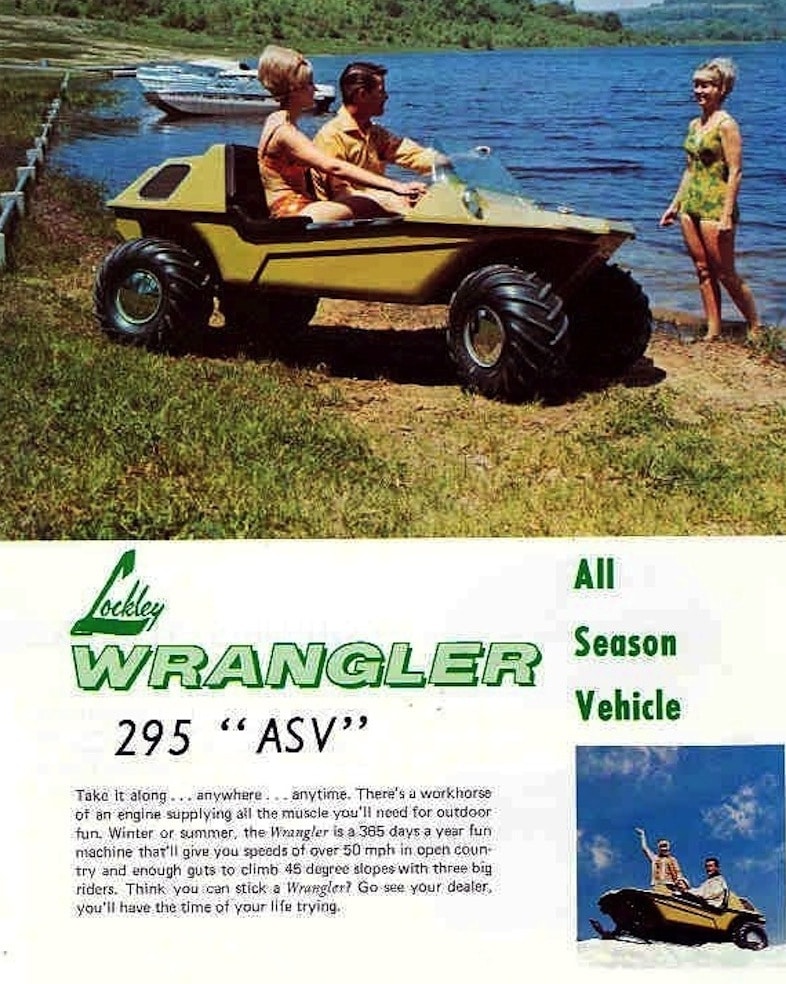
It did not last long….
It wasn’t until 1988 when the Kawasaki MULE was released that the world saw the next mainstream side-by-side ATV. (Yes, the Honda Odyssey was released in 1976, but that was a single-seater UTV, not a side-by-side ATV).
MULE stood for Multiple Use Light Equipment. It blended an ATV with the utility aspects of a truck and provided off-road capabilities. The MULE was incredibly popular as a Utility focused side-by-side ATV and is still in use today.
Why do people want side-by-side ATVs?
A lot of the reason to own a side-by-side ATV comes down to personal preference.
That said, a side-by-side ATV can be safer. They almost always have more safety features than a traditional ATV.
They can have things like doors, seatbelts, roll cages, and windshields.
They can also be easier for many people to operate. They drive like a car. Side-by-side ATVs have steering wheels; many also have power steering and power brakes.
Side-by-side ATVs can also offer more performance than traditional ATVs. With side-by-side ATVs being so much larger than traditional ATVs they usually have a bigger motor and more suspension. Bigger motors and more suspension mean a faster ride or being able to go places regular ATVs can’t go.
Side-by-sides can usually do more when it comes to farm, ranch, or utility.
The typical side-by-side can pull and haul more than a typical ATV due to its increased power, suspension, and weight.
More performance, safety features, and easier driving can mean more fun for most people!
Is a 2-seater, 4-seater, or 6-seater better?
The number of seats or passengers a side-by-side can carry really comes down to how many people you are going to carry. A 4-seater is not better than a 2-seater necessarily unless you need to carry four people. In that case, the 4-seater is the hands-down winner!
The only potential drawback to carrying more people is that the more people you can carry the bigger the machine is.
A bigger machine means that you might not fit on some of the tighter trails a smaller machine fits on. Although many of the regulated trails are designated specifically for what class of ATV you are riding.
A bigger machine also means you will need a bigger trailer to haul your side-by-side. And as you would expect, a bigger side-by-side with more carrying capacity will usually cost you more money.
What do you use a side-by-side ATV for?
Just about anything you can think of, but the most common activities people use side-by-side ATVs for are going to be:
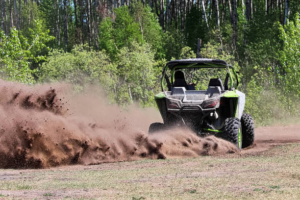
Hunting.
Getting to your perfect spot in the woods, with all your gear, can be tough. And depending on how far out you are it can take a long time to get there. Well not if you use a side-by-side ATV. It can be a piece of cake to carry all your gear and even your hunting buddies a long way into the woods.
Camping.
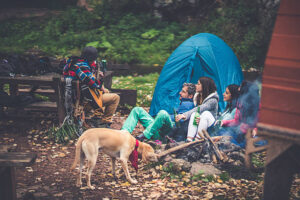
Like hunting, you usually need to carry some gear, you are going to a remote location, and many times there is more than one of you. Yes, you can walk, but a side-by-side makes it much easier, and for many that can mean much more fun. Also, by using a side-by-side ATV to get to your spot you are probably able to get to a place you would not be able to get to on foot. At the very least you get there faster so you have more time for camping before you head back to civilization and go back to work.
Trail Riding.
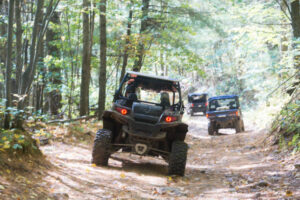
This can be a lot of fun on an ATV and especially using a side-by-side. A side-by-side is typically very comfortable to ride in and can allow you, or at least the passengers, to take in the views and the scenery while you ride.
We do a lot of this, and I can tell you it is a great way for the family to spend some time together outdoors and have some fun. My kids and I have made a lot of memories on the trails in our side-by-side.
The only possible downside to trail riding in a side-by-side is that they may be too big for some trails. However, this is rarely the case. Most trails you ride on that are big enough for a traditional ATV or 4-wheeler will be big enough for your side-by-side.
Farm Work / Utility.
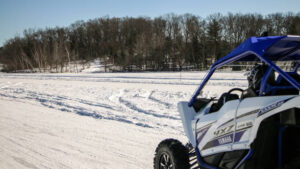
This is the reason side-by-sides were invented and is arguably probably still the biggest market for side-by-sides. Farmers, ranchers, linemen, fire, and rescue workers, etc. need a vehicle that can go almost anywhere and carry their gear and carry more than one person.
I use my side-by-side for this quite a bit as well. In the winter it carries all my gear when we go ice-fishing. I like it because it is much lighter than my truck. It carries just as much gear and as many people without the added weight of a full-sized vehicle.
I also use it to plow snow. It’s more fun than a snowblower and definitely more fun than shoveling. OK, a side-by-side is way more expensive than a shovel and there really is no comparison. But if you need a plow, a side-by-side is a great alternative to a truck-mounted plow. Side-by-sides can also be a better choice than an ATV for plowing due to their increased weight and power.
Off-Roading.
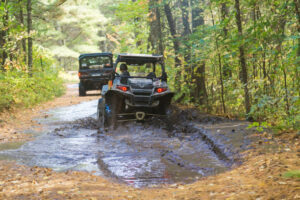
You could say hunting, camping, and trail riding are off-roading. And you would be correct. However, in many areas, and especially where I live, trail riding is usually riding fire roads, gravel roads, old railroad beds, etc. You can find some spots that are challenging, but most of the time it’s fairly relaxed riding.
Riding to your hunting spot or your favorite camping spot, although the riding can be challenging, you are usually riding with the destination in mind. You want to get there as fast as possible with the least amount of mud, bumps, and jumps possible. You don’t want your gear covered in mud when you get there.
Off-Roading is usually just the opposite. Depending on the conditions, your area, and what gets your adrenaline going off-roading is anything but relaxed. You could be rock climbing, hill climbing, mud bogging, dune riding, etc. Pick your adventure, but off-roading is usually exhilarating and messy.
My family and I also do a lot of this. Well, my kids and I do a lot of this, my wife is not much of a fan of the mud or the jumps. She will get out if it looks like we are going to turn our side-by-side ATV into a submarine.
Who makes side-by-sides?
Polaris – https://offroad.polaris.com/en-us/whats-new-with-polaris-off-road/
Can-Am – https://can-am.brp.com/off-road
Kawasaki – https://www.kawasaki.com/en-us/
Yamaha – https://www.yamahamotorsports.com
Honda – https://powersports.honda.com/
John Deere – https://www.deere.com/en/gator-utility-vehicles/
Bobcat – https://www.bobcat.com/na/en/equipment/utility-vehicles
Gravely – https://www.gravely.com/en-us/power-equipment/vehicle
Tracker – https://www.trackeroffroad.com/
What accessories do people add to side-by-side ATVs
There are an endless amount of upgrades and accessories you can add to your side-by-side ATV. Below we have categorized them into two groups: Accessories and Upgrades.
Accessories are things that probably did not come from the factory or your dealer when you purchased your new side-by-side.
Upgrades are things that you are replacing for something better.
Accessories
Mirrors, Sound bars, Trailers, Winches, Plows, Windshields, Back Panels, Heaters, Doors, Trailers, Stereos, Tools, Storage Racks, Spare Tire Racks, Bumpers, Light Bars, Rear Lights, Turn Signal Kits, License Plate Holders, Whips, Fire Extinguishers, Track Systems, Hitches, Dome Lights, Gun Boots and Gun Racks, Chain Saw Holders, Jacks, Tire Repair Kits, Snorkel Kits, Portable Pressure Washer, Coolant Additives, Tow straps, Switches, Storage Boxes, Belt Holder, Augur Holder, Gloves, Boots, Rain Gear, and Coolers.
Performance upgrades
Performance Chips, Clutches, Exhaust, Turbos, Air Filters, Radiators, Belts, Plugs, Oil, Seat Belts, Seats, Radiators, Gauges, Tires, Rims, and Lights.
Side-by-Side ATV Scheduled Maintenance
When it comes to scheduled maintenance each manufacturer will have its own schedule.
You also need to adjust your maintenance schedule based on your riding conditions.
If you ride sand dunes 5 days per week, you probably need to check your air filter more often. If you tow heavy loads regularly you should check tires, breaks, and belts more often.
When in doubt always refer to your owner’s manual.
Respect your break-in period! The below is after you have followed the manufacturer’s break-in period maintenance schedule!
Tire Pressure: Before you ride.
Check Oil: Every time you fill up your gas.
Change Engine Oil and Filter: 100 hours, 6 months, or 1000 miles. Whichever comes first.
Transmission Oil: 100 hours, 12 months, or 1000 miles. Whichever comes first.
Drive Belt Inspection: 100 hours, 12 months, or 1000 miles. Whichever comes first.
Clutch Inspection: 100 hours, 12 months, or 1000 miles. Whichever comes first.
Front Wheel Bearings Inspection: 100 hours, 12 months, or 1000 miles. Whichever comes first.
Suspension Inspection: 200 hours or 2000 miles. Whichever comes first.
Break Fluid Inspection: 200 hours or 2000 miles. Whichever comes first.
Again, these are general recommendations. You should vary based on your riding conditions and your owner’s manual.
If you don’t have your owner’s manual chances are you can find it online. Here is a link to the manual for a Polaris Ranger/General.
If you are not comfortable or don’t have the time to perform scheduled maintenance then it’s a good idea to take your side-by-side to a qualified technician.
Side-by-Side ATV Glossary
Check with your state regulations to be sure of restrictions.
- All-Terrain Vehicle (ATV). Motorized vehicle, intended for off-road use, 50 inches wide or less, and has a dry weight that is less than 1000 – 1200 pounds.
- Side-by-Side ATV (SXS). Motorized vehicle, intended for off-road use, 65 inches wide or less, generally has a dry weight of less than 1800 – 2000 pounds and is equipped with rollover safety systems (seat belts, roll cages).
- Utility Terrain Vehicle (UTV). All side-by-side ATVs are UTVs, but not all UTVs are side-by-side ATVs. Not all UTVs allow you to sit side-by-side. There are some UTVs designed for only a single passenger.
- Off-Highway Recreational Vehicle (OHRV). All ATVs, side-by-sides, and UTVs are considered OHRVs. In some areas, snowmobiles may also be considered OHRVs
- Class I ATV. Has a maximum width of 50 inches, generally a maximum dry weight of 1,000 – 1,200 pounds (check with your State to be sure, some states don’t regulate the weight), three or more inflatable tires (don’t see many 3-wheelers anymore), handlebars for steering, and a seat designed to be straddled by the operator. Also known as 4-wheelers, “quads” or 3-wheelers.
- Class II ATV. Weighs more than or is wider than a Class I ATV and is not a Class IV ATV. Also known as 4x4s and includes trucks, Jeeps, SUVs, dune buggies, and sand rails.
- Class III ATV. Off-road or off-highway motorcycle (ORM or OHM) with two tires.
- Class IV ATV. These machines have a maximum width of 65 inches, a maximum dry weight of 1,800 – 2,000 pounds, four or more inflatable tires, a steering wheel for steering, and non-straddle seating. Also known as side-by-sides or UTVs.

